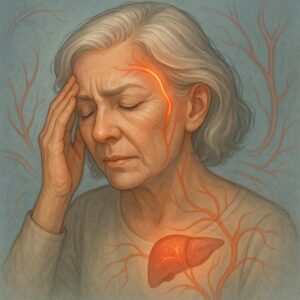Giant Cell Arteritis (GCA) is a chronic inflammatory autoimmune disease that affects the large and medium-sized arteries, especially those in the head, neck, and upper body. Most commonly, it involves the temporal arteries on the sides of the head.
The inflammation can narrow or block blood flow, leading to symptoms like headache, scalp tenderness, jaw pain, and vision problems. Without treatment, GCA can lead to permanent vision loss or stroke.

